- Do you subscribe to Dharma Dog Training’s Newsletter? You should.
- A Unique Campaign from The Humane Society of the United States
- Rabid bats in Omaha- Stay safe, prepared with these tips
- Springtime Activities in Omaha
- Mill Dog Monthly from Bailing Out Benji
- World Spay Day, Legislative Alert in Nebraska
- Attend the Nebraska Rescue Council’s monthly meeting this Saturday
- Five Hard-to-Ignore Reasons to Adopt!
- Paws in Pink to Benefit Breast Cancer Foundation
- VCA, Inc. Acquires MidWest Vet Specialists from Kansas State University
Meet Linda and Rick Smith- Corgi Competitors and Companions
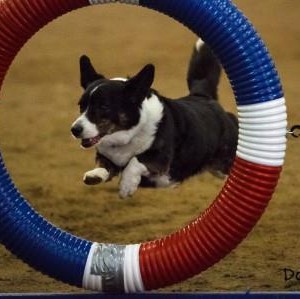
Typically, our Pet People features feature celebrities. News anchors, radio broadcasters, notable figures from the art scene in and around town and leaders from the animal community are the folks we introduce you to or help get to know better.
We’ve realized that these stories are great and that readers love to know more about the people they see on TV, in magazines, on billboards and in the newspaper, but there are thousands of others in Omaha who have compelling animal stories, too. These folks are stars in their own right and we’re here to tell their stories as well.
This particular story will be serve readers two purposes: First, you’ll meet a husband and wife team who train their award-winning pups here in Omaha; secondly, you’ll discover the competitive dog scene Omaha embraces with frequent contests, shows and expositions. These stories don’t often reach outside the little worlds they are fostered in, but we at Pets in Omaha think they deserve to be told. Together, we’ll continue to celebrate our famous, pet-loving faces, but we’ll also discover some talented, caring and passionate pet people you’ll be glad to read about.
Linda and Rick Smith, both Philadelphia, PA, natives, met at a riding stable where they both owned horses. The couple first shared their love for animals there and enjoyed trail riding with their equine pals. Eventually, both Linda and Rick were injured in riding accidents, and to make matters worse, it was increasingly expensive to own horses. Riding trails in the area were also being turned into housing developments. Linda says the upshot was that “we sold the horses.” The couple’s love for animals was too strong, however, so they have continued it in another way.
Linda says that after giving up the horses, she “immediately pictured herself becoming a couch potato and gaining a million pounds without a compelling reason to get outside and exercise.” She was a magazine editor for Farm Journal and spent most of her days at her desk. She’s currently Vice President of Publications for Brock Associates, a commodity marketing advisory firm. After some consideration, she announced, “I want to get a dog.” Discussions followed about various breeds, and since she and her husband knew and loved the corgis they saw at various horse stables (they are very popular with the horse set), that is what they decided upon. Their lives would never be the same.
The couple’s first corgi, a Pembroke named Max, was six months old when the couple got him. His breeder was planning to keep him for breeding but decided his nose was “too long.” To this day, she says he has “an ugly face.” Check out the pictures throughout this article and you’ll see that all the couple’s pups are looking just fine. The breeder strongly suggested that Linda enter a training class and recommended one that was actually close to her home. “I very much enjoyed the companionship of the other dog lovers there and before I knew it, I was showing Max in Obedience.” Showing is what it sounds like- Linda and Max display their talents for others in order see how wonderful the bond between a dog and its trainer can be. He won his very first class and got his first AKC title (Companion Dog) in just the minimum three trials needed. This would not the last of Linda’s honors.
As the two worked on the next level of obedience, though, Max increasingly indicated it wasn’t “his cup of tea.” Linda then decided to try agility. It’s a faster moving activity and one can talk to the dog through the demonstrations. Agility is a sport that grew out of training for military and police dogs. Basically, according to Linda, the dog goes through an obstacle course. “I found a place where Max could learn the obstacles and I could learn how to direct him. It soon became obvious that he loved all that running, jumping, climbing, and traversing the tunnels. I enjoyed it more too.” While one must be careful in how one directs the dog, it is much less regimented than obedience, which requires a person who enjoys being very detail-oriented with his or her dog in order to excel.
Max won his first agility competition, too, and it was “off to the races.” By this time, the couple was hooked on Corgis. “On the Corgi calendars we bought, Rick kept seeing black and white ones and saying ‘we need one of those.’ So for his Easter basket, in 2005, I brought home Darla, a Cardigan Welsh Corgi.” Many people don’t realize there are two distinct Welsh Corgi breeds: The tailess Pembrokes, so loved by the Queen of England, and the Cardigans, with a tail. At one time the two were interbred, but since early in the 1990s, they have been kept quite separate. The ears on the cardigans look slightly wider and more rounded at the tip. Pembrokes come in only Max’s reddish tan color and tri-color (tan, black and white). Cardigans come in those two colors but also black and white, brindle and merle. Both breeds were bred to herd cattle. Their short legs, the result of a dwarf gene, meant that when a cow kicked out, it generally missed the dog by going over their heads. But at 30-40 lbs., these “low riders” are very sturdy and forceful and they have a big-dog bark and mentality. They are not hyper as many small dogs are and are great with children.
Darla was from a small litter and was the runt, but as a tiny girl, showed interest in agility. Her breeder was very much into performance, especially agility, and it was the breeder’s desire for another agility dog that caused her to choose Linda and Rick over another prospective home.
“We became good friends with the other Hedgerow dog owners in the New Jersey/Pennsylvania area as many of us were involved with showing,” Linda says. It seems as if Linda really enjoys showing the dogs, but she loves the social aspect of these competitions. Rick does, too. He acts as a corgi chauffeur, groom, videographer and cheerleader at events.
In 2007, a friend of Linda’s, Christa Bedford, posted a video of Max on YouTube called “Pembroke Welsh Cori winning his Agility Class.” It is still available to see and has been viewed 36,175 times (click here to see it). Max is quite the internet star. By that time, Darla was competing as well. She is the most dominant of the couple’s dogs and is a fierce agility dog. “If I am not fast enough for her, she will make her own decisions about what to do next,” Linda says. “Sometimes she’ll stop and yell at me, very clearly demanding that I let her know what is next. She’s the one who guards the house and ‘owns’ the dog toys. She’s also the most catlike. She’s rather independent, happy to curl up in a warm bed rather than seeking to be close to the humans in the house.” Linda and Rick’s dogs have a special talent, but at their core, they are great companions- something we can all relate to.
Dylan joined the couple’s pack in summer of 2007. He was one of a litter of 10 pups and was a goofy- looking big guy who slept a lot and let the other pups crawl over him when they were in a pen at the shows. “I wasn’t really looking for a third dog, but he was so sweet that when our breeder urged me to consider him, we adjusted the Lay’s potato ad to ‘Corgis, you can never have enough.’” He has turned out to be a very reliable agility dog though his relatively heavy front end keeps him from being one of the fastest. Nobody’s perfect…
In addition to agility, where all three have moved up to highest class, all three have earned their CD (Companion Dog) certification. When Rally, a more dog-and-user-friendly version of obedience came out in which the dog/human team performs a number of “stations” with signs telling what they have to do, all three moved up to the third level – “Excellent.” In herding, they all have gotten the lowest level titles, HT (Herding Tested) and PT (Pre-Trial Tested). These dogs have proved their versatility in a variety of sports.
For those wondering about the nature of competitions, Linda offers this insight: “In terms of difficulty, AKC agility has three levels: Novice, Open and Excellent. Novice courses are shorter and easier and you are allowed more time and a certain number of mistakes and still qualify in the specific class at the show. Open becomes longer and faster and the number of mistakes allowed drops. In Excellent, tests are required that tempt the dog to make a mistake – but at this level no mistakes are allowed. Within in each level there are two central types of classes: standard (the obstacle course that includes climbing, jumping on a table and staying there, and teeter totters) and jumpers with weaves, which does not include the “contact” obstacles and runs much faster. AKC now offers a few other classes as well, so your dog could compete in as many as four classes in a day. The Standard and Jumpers classes each require qualifying three times under at least two judges to earn a title. Once you earn your Excellent title, you compete on the same course but as a “Master.” If you accumulate 20 “double Qs” (days when you qualify in both classes) and 750 points, earned by being faster than the allowed course time, you earn a “Master Agility Champion” title or MACH.
Wow. It’s quite nuanced and if one is to get involved in these competitions, there seems to be much to learn. But Linda emphasizes that the quality time spent with your dog in getting there makes it all worthwhile. And the competition is friendly. “I enjoy showing because it is a pretty social event – you get to know people as you wait your turn. It also admittedly is a lot of fun to bring back ribbons to celebrate your success. But the reason I keep going at it is those runs when you and the dog are in perfect sync and you ‘make it look easy.’ Being so in tune together, with the dog paying close attention to what you want and doing it is just a great high. That’s just as true during training as in competition,” she says.
For competition, each dog is measured at the shoulders and assigned to a size class so that small dogs compete against each other and dogs compete against each other. Small dogs are allowed slightly more time than big ones to run the same course.
Each course is different and is designed by the judge according to AKC rules. The dog never goes on the course until its turn. The handler receives a map of the course and is allowed 10 minutes to “walk” the course, going through it over and over to figure out where the dog might misunderstand where to go and how to tell the dog to run it. Some courses are easier to remember than others and if the handler gets lost it is just as much a mistake as if the dog goes off course. Between handler errors and dog misunderstandings (or simply getting the “zoomies” and going out of control), the qualifying rate is actually quite low. On an really tough course out of 10 dogs, it is quite possible only 2 will qualify.
Linda and her pups have won many awards and she has many great memories from competition, meeting people and having her doggie companions. “I enjoy showing because it is a pretty social event – you get to know people as you wait your turn. It also admittedly is a lot of fun to bring back ribbons to celebrate your success. But the reason I keep going at it is those runs when you and the dog are in perfect sync and you ‘make it look easy.’ Being so in tune together, with the dog paying close attention to what you want and doing it is just a great high. That’s just as true during training as in competition,” she says.
Training is a big part of being successful in any endeavor, but especially in agility competitions. Linda spends a great deal of time training her dogs. “I have to confess that I don’t train as much as I probably should. I don’t own much agility equipment because we have no room indoors and relatively little lawn to set up on. I did buy weave poles because that is our biggest downfall. We go to class once a week. My dogs are great, though: We had a couple of periods when they had no training for 3-6 months, such as when we moved to Omaha three years go (I came out first and they stayed in our house with Rick until I found one to buy here) yet they did just as well when I entered them in a show here,” she says. If you are interested in starting to train and compete, keep in mind these great commitments.
Also, if you are interested in getting started with your own dogs, Linda has some advice for you.
“It was dog connections that made it easy to move here,” she says. “Through the Corgi grapevine, I heard about GoDogsOmaha, near 84th and Maple. GoDogs has classes that run the gamut, from puppy socialization to obedience, rally, agility, flyball and tracking. The people are super-nice and made me feel right at home even though my training background was pretty different from the way they train.”
“It was like getting an instant set of friends who could give me all sorts of tips that made it easy to own a dog in a new city.”
Another example of how the corgi network helped Linda was finding one of our Pet Partners, Bark Avenue Dog Salon. “Corgis do shed a lot and, every now and then, Max needs a spa day. Bark Avenue treats him like a king.” We can attest to their great service and invite you to do the same. “We have all our dogs’ nails done there because I just can’t see the nails with those huge ears twisting and turning the whole time,” Linda says jokingly.
If you are interested in Corgis, check out the American Kennel Club’s Web site for their description. Online Vet Medicine sites also explain any genetic diseases to watch out for. Linda says they also have a directory of breeders and a link to the national clubs who can also direct you to sources. There is also an active Corgi rescue group – you’d want to do the paperwork as soon as you decide as sometimes it takes a little while for one to become available.
Linda indicates that there are also some alternative organizations for agility, including USDAA, NADAC and CPE. A simple Google search for any of those organizations will give you a great introduction. These groups often offer a bigger variety of classes and can be a bit more “low key” than AKC. For example, The Nebraska Humane Society hosts CPE trials.
As you can see, not only is the Omaha pet community even more vibrant and diverse that you already knew, but there are star pets and wonderful Pet People everywhere you look. Make sure to check our events calendar frequently as we’ll post any competitions and events related to Linda’s hobby and time she loves to use socializing and showing her pups. Linda is a very friendly lady, so if you happen to meet her at an event, make an effort to get to know her. She’s full of advice and can definitely relate to those who are planning on trying competition in Omaha.
Related Posts
Latest News
-
3 Tips for Pet Owners on Training Rescue Dogs
Owning a rescue dog can take some work compared to...
- Posted 3 weeks ago
- 0
-
Choosing the Right Pet for Your Lifestyle
Are you thinking about getting a pet but unsure what...
- Posted 1 month ago
- 0
-
How to Make Your Rescue Pet as Comfortable as Possible
Did you bring home a new pet from a shelter...
- Posted 2 months ago
- 0
-
How Having A Pet Can Change Your Life
Having a pet can open your heart in ways that...
- Posted 7 months ago
- 0
-
How To Improve The Life Of Your Senior Pet
Do you have an elderly fur baby and want to...
- Posted 7 months ago
- 0
-
Springtime Activities To Enjoy With Your Furry Friends
Are you preparing for warmer weather and want some ideas...
- Posted 8 months ago
- 0
-
Pros And Cons Of Microchipping Your Pets
Have you considered whether your pets should be microchipped and...
- Posted 9 months ago
- 0




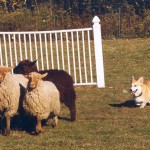
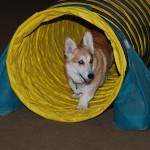

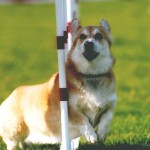
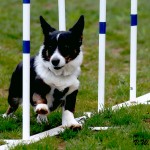
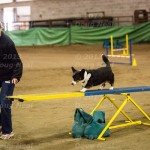
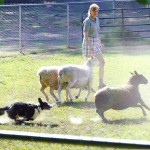
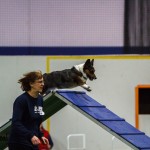
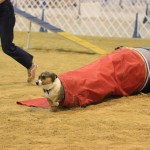
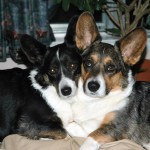
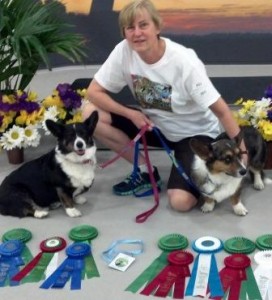
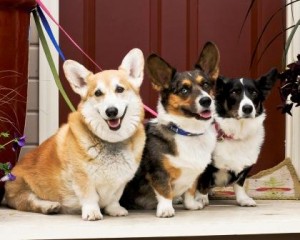
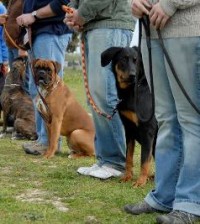
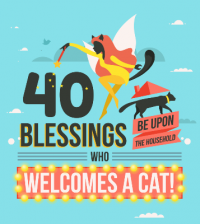
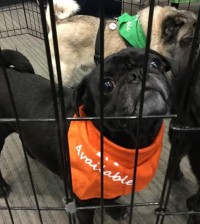





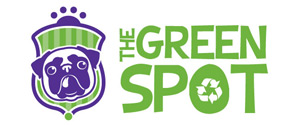

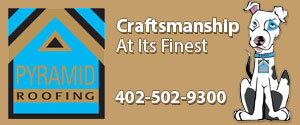


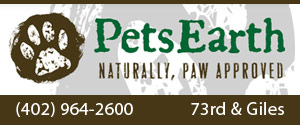
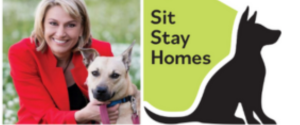




You must be logged in to post a comment Login